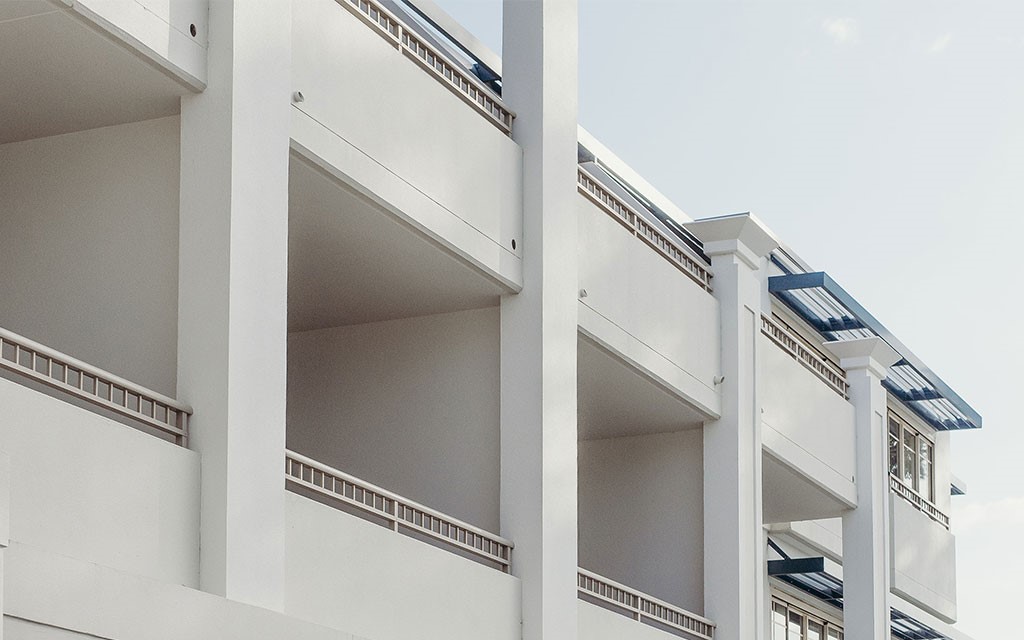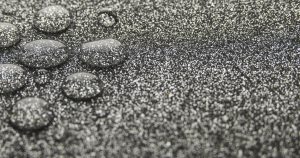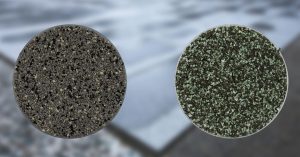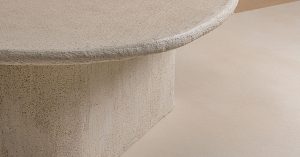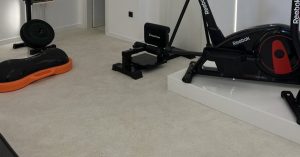Haben Sie sich schon einmal gefragt, wie die richtige Außenwandveredelung das Erscheinungsbild Ihres Hauses völlig verändern und gleichzeitig jahrzehntelangen, zuverlässigen Schutz bieten kann? Die Wahl der passenden Fassadenbeschichtung zählt zu den wichtigsten Entscheidungen, die Hausbesitzer treffen müssen – denn sie beeinflusst sowohl die ästhetische Wirkung als auch die langfristige Widerstandsfähigkeit der Immobilie maßgeblich. Dieser umfassende Leitfaden nimmt Sie mit in die faszinierende Welt der Fassadengestaltung: von traditionellem Putz und modernem Faserzement bis hin zu luxuriösem Naturstein – und unterstützt Sie dabei, eine fundierte Entscheidung zu treffen, die ideal zu den baulichen Anforderungen Ihres Hauses und Ihrem persönlichen Stil passt.
Wichtige Erkenntnisse:
- Außenwandverkleidungen spielen eine entscheidende Rolle für die Gesamtästhetik eines Hauses.
- Die Haltbarkeit ist ein zentraler Faktor bei der Auswahl der Fassadenveredelung und beeinflusst den langfristigen Wartungsaufwand.
- Unterschiedliche Arten von Außenwandbeschichtungen eignen sich jeweils für verschiedene Klimazonen und Umweltbedingungen.
- Materialien wie Putz (Stucco) und Vinyl bieten je nach Budget und Stilvorlieben jeweils spezifische Vorteile.
- Wer die Eigenschaften und Vorzüge der einzelnen Optionen kennt, kann bessere Investitionsentscheidungen treffen.
Inhaltsverzeichnis
Außenwandverkleidungen verstehen
Außenwandverkleidungen bilden die essenzielle Schutzschicht zwischen der Bausubstanz Ihres Hauses und den Herausforderungen der Witterung. Sie erfüllen eine doppelte Funktion: Sie bieten nicht nur funktionalen Schutz, sondern tragen auch wesentlich zur optischen Gestaltung bei. Diese hochwertigen Fassadenmaterialien wirken wie ein Schutzschild gegen extreme Wetterbedingungen, verhindern zuverlässig das Eindringen von Feuchtigkeit und verbessern gleichzeitig die Wärmedämmung sowie die Energieeffizienz Ihres Gebäudes. Die Auswahl der richtigen Außenwandverkleidung erfordert sorgfältige Überlegung – denn eine falsche Entscheidung kann kostspielige Reparaturen und hohen Wartungsaufwand nach sich ziehen, die durch eine vorausschauende Planung leicht vermeidbar gewesen wären.
Definition und Zweck
Außenwandverkleidungen bilden die erste Verteidigungslinie Ihres Hauses. Sie stellen ein umfassendes Schutzsystem dar, das die Bausubstanz effektiv vor Wasserschäden, windgetragenem Schmutz und dem Eindringen von Schädlingen bewahrt. Diese präzisen entwickelten Baumaterialien arbeiten zuverlässig daran, strukturelle Schäden zu verhindern und gleichzeitig die Dämmleistung sowie die gesamte thermische Performance Ihrer Immobilie zu verbessern.
Mit der richtigen Wahl der Verkleidung sorgen Hausbesitzer nicht nur für dauerhafte Bausicherheit, sondern auch für eine ansprechende Optik – ein harmonisches Zusammenspiel von Funktionalität und Design, das den langfristigen Wert der Immobilie erheblich steigert. Jede Art von Außenwandverkleidung bringt individuelle Eigenschaften mit sich: sei es eine verbesserte Wärmedämmung, eine besondere Oberflächenstruktur oder ein wartungsarmer Charakter – vor allem für vielbeschäftigte Eigentümer ein entscheidender Vorteil. Dieser ganzheitliche Ansatz macht aus einem einfachen Gebäude ein stilvolles, leistungsfähiges Zuhause, das sich in jeder Umgebung sehen lassen kann.
Bedeutung klimatischer Faktoren
Die Berücksichtigung klimatischer Gegebenheiten ist ein unverzichtbarer Schritt bei der Auswahl geeigneter Außenwandverkleidungen. Materialien, die sich in trockenen, sonnigen Regionen bestens bewähren, können in Gebieten mit Frost, starkem Niederschlag oder hoher Luftfeuchtigkeit gravierende Mängel aufweisen. Die Leistungsfähigkeit eines Fassadenmaterials hängt direkt von den Umweltbedingungen ab – dieser Zusammenhang darf keinesfalls unterschätzt werden.
Besonders in feuchten Klimazonen spielt die Ableitung von Feuchtigkeit eine zentrale Rolle. Hier können feuchtigkeitsresistente Materialien und eine gute Hinterlüftung entscheidend dafür sein, ob die Fassade jahrzehntelang hält oder vorzeitig ersetzt werden muss. Auch in Regionen mit ausgeprägtem Frostwechsel sind spezielle Verkleidungen erforderlich, die den häufigen Temperaturwechseln standhalten, ohne ihre Stabilität oder Optik zu verlieren. In heißen Klimazonen wiederum müssen Materialien UV-beständig sowie resistent gegen Ausbleichen, Rissbildung und thermische Ausdehnung sein – Eigenschaften, die minderwertige Produkte nicht zuverlässig bieten.
Arten von Außenwandveredelungen
Die Welt der Außenwandveredelung bietet eine beeindruckende Vielfalt an Optionen – jede mit ihren eigenen Vorteilen und Eigenschaften, die sich gezielt an unterschiedliche architektonische Stile, Budgetvorgaben und funktionale Anforderungen anpassen lassen. Von bewährten, traditionellen Materialien wie Ziegel und Holzverschalung bis hin zu innovativen Verbundwerkstofflösungen und moderner Metallverkleidung: Hausbesitzern steht heute eine nie dagewesene Auswahl zur Verfügung, um die Fassade ihres Hauses individuell zu gestalten – inklusive verschiedenster Oberflächenstrukturen, passend zu jedem architektonischen Konzept.
Überblick über gängige Optionen
Putz gilt weiterhin als die bevorzugte Wahl für mediterrane und südwestlich geprägte Architekturstile. Er verleiht Gebäuden den begehrten Charme vergangener Epochen und überzeugt gleichzeitig durch hervorragende Witterungsbeständigkeit und Langlebigkeit.
Vinylverkleidungen haben sich in den letzten Jahren stark weiterentwickelt: Moderne Ausführungen bieten realistische Holzmaserungen und eine breite Farbpalette, wodurch sie sich optisch kaum noch von hochwertigen Naturmaterialien unterscheiden – bei deutlich geringeren Kosten. Ziegel gelten weiterhin als der Goldstandard unter den Außenwandmaterialien. Sie verbinden zeitlose Ästhetik mit außergewöhnlicher struktureller Stabilität und einem äußerst geringen Wartungsaufwand. Holzverschalung sorgt für Wärme und eine natürliche Textur, die von keinem synthetischen Material vollständig nachgeahmt werden kann während Naturstein durch seine ästhetische Beständigkeit und natürliche Eleganz zur Aufwertung jeder architektonischen Struktur beiträgt. Faserzementverkleidungen vereinen moderne Technologie mit klassischem Design. Sie bieten die Optik von Holz, jedoch ohne dessen aufwendige Pflege.
Metallverkleidungen verleihen vor allem modernen Wohngebäuden eine klare, industrielle Ästhetik. Gleichzeitig punkten sie mit hoher Widerstandsfähigkeit und sehr guter Energieeffizienz.
Art der Außenwandverkleidung | Haltbarkeitsb ewertung | Pflegeaufwand | Klimatische Eignung | Kostenrahmen |
Putz | Hoch | Medium | Heiße, trockene Klimazonen | Medium |
Vinylverkleidung | Mittel–hoch | Gering | Die meisten Klimazonen | Gering bis Mittel |
Ziegel | Sehr hoch | Sehr gering | Alle Klimazonen | Hoch |
Holzverkleidung | Medium | Hoch | Gemäßigte Klimazonen | Mittel–hoch |
Naturstein | Sehr hoch | Gering | Alle Klimazonen | Sehr hoch |
Faserzement | Hoch | Gering | Die meisten Klimazonen | Mittel–hoch |
Metallverkleidung | Hoch | Gering | Alle Klimazonen | Mittel–hoch |
Entscheidungsrelevante Faktoren
Die Wahl des geeigneten Fassadenmaterials wird von einer Vielzahl miteinander verknüpfter Faktoren beeinflusst. An erster Stelle steht das lokale Klima, das maßgeblich die langfristige Leistungsfähigkeit und Zufriedenheit bestimmt. Ebenso entscheidend ist der architektonische Stil des Gebäudes: Bestimmte Materialien harmonieren besser mit spezifischen Gestaltungsrichtungen und tragen so zu einem stimmigen Gesamtbild sowie einer gesteigerten Außenwirkung bei.
Auch das verfügbare Budget hat einen maßgeblichen Einfluss auf die Entscheidung, da hochwertige Materialien wie Naturstein oder maßgefertigte Holzverkleidungen deutlich höhere Anfangsinvestitionen erfordern als beispielsweise Vinyl oder einfache Putzsysteme. Dennoch berücksichtigen vorausschauende Bauherren auch den langfristigen Nutzen: Wartungskosten, Lebensdauer und energetische Vorteile können höhere Anschaffungskosten durch geringere Betriebsausgaben und eine gesteigerte Immobilienwertentwicklung langfristig ausgleichen.
Putz (Stucco) : Der Klassiker
Seit Jahrhunderten zählt Putz zu den beliebtesten Außenwandbekleidungen – dank seiner zeitlosen Ästhetik, hervorragenden Witterungsbeständigkeit und bemerkenswerten gestalterischen Vielseitigkeit. Das bewährte Material besteht aus einer exakt abgestimmten Mischung aus Zement, Sand und Kalk. Es entsteht eine robuste Oberfläche, die strukturiert oder farbig gestaltet werden kann, um nahezu jeden gewünschten architektonischen Ausdruck zu realisieren.
Zusammensetzung und Anwendung
Die Grundzusammensetzung von Putz ist entscheidend für seine Leistungsfähigkeit. Moderne Varianten enthalten Zusatzstoffe, die die Widerstandsfähigkeit gegen Witterungseinflüsse und die Feuchtigkeitsregulierung weiter verbessern. Erfahrene Fachkräfte tragen Putz in mehreren exakt abgestimmten Schichten auf. Jede Lage muss ordnungsgemäß aushärten, bevor die nächste Schicht aufgetragen wird – nur so werden optimale Haftung und langfristige Stabilität sichergestellt.
Fachgerecht ausgeführte Putzsysteme bilden fugenlose, monolithische Oberflächen, die Wasser zuverlässig abweisen und zugleich diffusionsoffen bleiben. Dadurch wird die Ansammlung von Feuchtigkeit in der Wandkonstruktion vermieden – ein wesentlicher Schutz vor Bauschäden wie Fäulnis oder Schimmel. Die Anwendung erfordert handwerkliche Präzision und große Sorgfalt: Fehler bei der Ausführung können zu Rissen, Durchfeuchtung und vorzeitigem Versagen führen – mit negativen Auswirkungen auf Optik und Funktion.
Vorteile und Nachteile
Putz überzeugt bei fachgerechter Ausführung durch seine hohe Langlebigkeit und ausgezeichnete Witterungsbeständigkeit. Die pflegeleichte Oberfläche bleibt über Jahrzehnte hinweg ansprechend und benötigt nur minimale Instandhaltungsmaßnahmen. Zudem ist Putz farbstabil, resistent gegen Insektenbefall und nicht brennbar – ein klarer Vorteil für Bauherren, die langfristige Werthaltigkeit und Sicherheit schätzen.
Allerdings setzt ein dauerhaft funktionierendes Putzsystem eine sorgfältige Feuchtigkeitsplanung und korrekte Verarbeitung voraus. Regelmäßige Sichtkontrollen und das frühzeitige Ausbessern kleiner Risse tragen wesentlich dazu bei, die Funktionalität zu erhalten und größere Schäden zu vermeiden.
Vinylverkleidung: Preiswert und pflegeleicht
Vinylverkleidungen haben den Markt für Außenwandbekleidungen revolutioniert, da sie eine attraktive und kostengünstige Lösung bieten, die gleichzeitig eine beachtliche Leistungsfähigkeit ohne den Pflegeaufwand traditioneller Materialien gewährleistet. Moderne Vinylprodukte überzeugen durch realistische Holzstrukturen, hohe Farbtreue und ansprechende Oberflächen, die kaum von hochwertigen Alternativen zu unterscheiden sind.
Merkmale und Vorteile
Zeitgemäße Vinylverkleidungen zeichnen sich durch außergewöhnliche Widerstandsfähigkeit aus – sie sind unempfindlich gegenüber Ausbleichen, Verbeulen und mechanischem Verschleiß. Zudem entfallen regelmäßige Anstriche, Lasuren oder Versiegelungen, was Aufwand und Kosten für die Instandhaltung erheblich reduziert.
Vinyl ist von Natur aus feuchtigkeitsresistent und somit unempfindlich gegen Fäulnis, Schädlingsbefall und Schimmelbildung – ein Vorteil insbesondere in wechselhaften oder feuchten Klimazonen. Viele Premiumprodukte sind zudem mit integrierten Dämmschichten ausgestattet, die Wärmebrücken minimieren und die Energieeffizienz des Gebäudes deutlich verbessern.
Langfristige Leistungsfähigkeit
Bei fachgerechter Montage in Verbindung mit hochwertigen Materialien bieten Vinylverkleidungen eine zuverlässige, langlebige Fassadenlösung. Das Material bleibt formstabil, splittert nicht und verliert auch nach vielen Jahren weder an Schutzwirkung noch an optischer Qualität.
Die energetischen Vorteile isolierter Vinylsysteme führen zu dauerhaft reduzierten Heiz- und Kühlkosten. Gleichzeitig ermöglicht die große Auswahl an Farben und Texturen eine individuelle Gestaltung – ganz ohne Kompromisse bei Funktionalität oder Budget.
Naturstein: Luxuriöse Ausstrahlung
Naturstein gilt als Inbegriff hochwertiger Fassadengestaltung und vereint unvergleichliche Ästhetik, Langlebigkeit und Prestige zu einem Fassadenmaterial, das jedem Gebäude eine außergewöhnliche Wirkung verleiht. Seine natürliche Ausstrahlung und zeitlose Eleganz lassen sich durch synthetische Alternativen nicht nachbilden. Im Gegenteil – Naturstein gewinnt im Laufe der Zeit durch natürliche Alterung und Witterungseinflüsse zusätzlich an Charakter und Schönheit.
Verlegung und Instandhaltung
Die Verarbeitung von Naturstein erfordert spezialisiertes Fachwissen sowie höchste Präzision, da jedes einzelne Steinelement exakt angepasst und fachgerecht befestigt werden muss, um eine langfristig stabile und witterungsbeständige Ausführung zu gewährleisten. Der Einbau umfasst die Auswahl geeigneter Steinformate, die Integration effektiver Entwässerungssysteme sowie sichere mechanische Verankerungen, die ein späteres Verrutschen oder Versagen ausschließen.
Trotz seiner exklusiven Wirkung ist der Pflegeaufwand für Naturstein überraschend gering. Regelmäßige Reinigung und gelegentliches Imprägnieren genügen in der Regel, um das hochwertige Erscheinungsbild und die Witterungsbeständigkeit dauerhaft zu erhalten. Hochwertige Natursteinsysteme können – bei sachgemäßer Ausführung – über Jahrhunderte Bestand haben, ohne nennenswerte Instandsetzungsmaßnahmen zu erfordern.
Kostenüberblick
Naturstein gehört aufgrund seiner Materialkosten und der aufwändigen Verarbeitung zu den kostenintensiveren Fassadenlösungen. Gleichzeitig stellt er eine nachhaltige Investition dar: Seine außergewöhnliche Langlebigkeit und sein dauerhaft elegantes Erscheinungsbild rechtfertigen die höheren Anfangskosten langfristig. Die massive, dauerhafte Qualität schließt spätere Austauschmaßnahmen nahezu vollständig aus und steigert zugleich den Immobilienwert deutlich.
Bauherren, die sich für Naturstein entscheiden, profitieren von der Exklusivität eines unverwechselbaren Fassadenbildes, das natürliche Schönheit mit architektonischer Wertbeständigkeit verbindet – und dies über Generationen hinweg.
Holzverkleidung: Wärme und Struktur
Holzfassaden erfreuen sich anhaltender Beliebtheit – nicht zuletzt wegen ihrer natürlichen Wärme, der lebendigen Oberflächenstruktur und des authentischen Charakters, der von künstlichen Materialien kaum erreicht wird. Als klassisches Fassadenmaterial bietet Holz eine Vielzahl unterschiedlicher Holzarten, von denen jede spezifische Eigenschaft und ästhetische Qualitäten mitbringt, die je nach Einsatzgebiet und Gestaltungsanspruch variieren.
Holzarten und deren Vorteile
Zeder (Western Red Cedar) überzeugt durch ihre natürliche Resistenz gegenüber Fäulnis und Insektenbefall und ist damit hervorragend für anspruchsvolle Anwendungen geeignet. Kiefernholz stellt eine kostengünstige Alternative dar, die – bei entsprechender Behandlung und Pflege – ebenfalls durch ein ansprechendes Erscheinungsbild überzeugt. Redwood wiederum besticht durch seine charakteristische Farbgebung und seine hohe natürliche Widerstandsfähigkeit gegenüber Witterungseinflüssen, was es zu einem gefragten Material für hochwertige Anwendungen macht.
Moderne Holzwerkstoffe (z. B. Engineered Wood oder Holzverbundplatten) kombinieren die optischen Vorzüge von Echtholz mit verbesserter Maßhaltigkeit und technischer Stabilität. Sie erfordern weniger Pflegeaufwand und behalten dennoch ihr natürliches Erscheinungsbild. Darüber hinaus sind sie weitgehend resistent gegen Verzug, Rissbildung und Fäulnis und bieten eine homogene Oberfläche sowie eine gleichbleibende Farbwirkung.
Holzart | Natürliche Fäulnisresistenz | Kostenstufe | Pflegeaufwand | Bestes Klima |
Zeder (Cedar) | Hervorragend | Mittel–hoch | Medium | Die meisten Klimazonen |
Kiefer (Pine) | Gering (benötigt Behandlung) | Gering bis Mittel | Hoch | Trockene Klimazonen |
Redwood | Hervorragend | Hoch | Medium | Küsten-/Gemäßigte Zonen |
Holzwerkstoff | Gut | Medium | Mittel-niedrig | Die meisten Klimazonen |
Eiche (Oak) | Gut | Hoch | Hoch | Gemäßigte Klimazonen |
Zypresse (Cypress) | Hervorragend | Mittel–hoch | Medium | Feuchte Klimazonen |
Pflegeaufwand
Holzfassaden erfordern regelmäßige Pflege, einschließlich periodischem Lasieren oder Streichen, um sie vor Feuchtigkeitseintritt und UV-Schäden zu schützen. Ein gut geplanter Wartungszyklus erhält nicht nur die ästhetische Wirkung des Materials, sondern auch dessen strukturelle Integrität und beugt zudem Fäulnis sowie Schädlingsbefall vor.
Bauherren, die konsequent auf eine fachgerechte Wartung achten, können sich über Jahrzehnte an hochwertigen Holzfassaden erfreuen. Diese entwickeln im Laufe der Zeit eine charaktervolle Patina und bewahren gleichzeitig ihre Schutzfunktionen.
Faserzement – Die moderne Alternative
Faserzementfassaden stellen die neueste Entwicklung im Bereich der Außenwandbekleidung dar. Sie vereinen die optischen Qualitäten von traditionellem Holz mit der Langlebigkeit und dem geringen Wartungsaufwand, den moderne Bauherren erwarten. Dieses innovative Verbundmaterial schlägt eine gelungene Brücke zwischen natürlicher Ästhetik und funktionaler Leistungsfähigkeit.
Merkmale und Vorteile
Faserzement zeichnet sich durch eine hervorragende Beständigkeit gegenüber Feuer, Insektenbefall und Verrottung aus und ist somit ideal für verschiedene Klimabedingungen und anspruchsvolle Anwendungen geeignet. Dank seiner speziell entwickelten Zusammensetzung entfallen die aufwendigen Instandhaltungsmaßnahmen, die bei Holzfassaden notwendig sind. Zugleich bietet das Material eine authentische Textur und Optik, die höchsten gestalterischen Ansprüchen gerecht wird.
Diese robuste Fassadenlösung widersteht Ausbleichen, Rissbildung sowie allgemeiner Abnutzung und bewahrt langfristig sowohl ihre Schutzwirkung als auch ihr Erscheinungsbild. Ihre Formstabilität verhindert Verformungen und Rissbildungen und sorgt so für zuverlässigen Witterungsschutz.
Verlegung und Instandhaltung
Für eine fachgerechte Montage von Faserzementfassaden ist professionelles Know-how erforderlich, um eine optimale Funktion und ein ansprechendes Erscheinungsbild sicherzustellen. Erfahrene Fachbetriebe kennen die spezifischen Anforderungen und Verarbeitungstechniken, die notwendig sind, um das volle Leistungspotenzial und die Langlebigkeit des Materials auszuschöpfen.
Die geringe Wartungsanforderung von Faserzement macht regelmäßiges Streichen oder Versiegeln überflüssig und bietet zugleich langanhaltende ästhetische Qualitäten und zuverlässigen Wetterschutz – ein wesentlicher Mehrwert für jede Immobilieninvestition.
Warum Terrazzo GraniTech die ideale Lösung für moderne Außenwandveredelung ist
Während traditionelle Außenwandverkleidungen wie Putz, Ziegel oder Faserzement jeweils ihre eigenen Vorteile bieten, vereint keine Lösung moderne Ästhetik, langfristige Beständigkeit und Nachhaltigkeit so überzeugend wie Terrazzo GraniTech. Speziell für die Anforderungen zeitgenössischer Architektur entwickelt, verbindet Terrazzo GraniTech den zeitlosen Charakter klassischer Terrazzo-Oberflächen mit innovativen Werkstofftechnologien und schafft so eine elegante, nahtlose Optik – ideal sowohl für minimalistische als auch ausdrucksstarke Gestaltungskonzepte.
Terrazzo GraniTech besteht aus leistungsstarken Zuschlagstoffen und Bindemitteln, die eine Oberfläche erzeugen, die gegen Ausbleichen, Rissbildung und das Eindringen von Feuchtigkeit beständig ist – ein entscheidender Vorteil für klimabewusste Bauherren von heute. Dank seiner vielseitigen Verarbeitungsmöglichkeiten lassen sich individuelle Farbgebungen und Zuschlagsstoffkombinationen realisieren. Dadurch eignet sich diese Lösung perfekt für Außenfassaden, die ein künstlerisches, anspruchsvolles Erscheinungsbild vermitteln sollen und zugleich harmonisch mit verschiedenen innenarchitektonischen Oberflächen abgestimmt werden können.
Im Gegensatz zu schweren Natursteinen oder pflegeintensiven Holzfassaden bietet Terrazzo GraniTech eine leichte und wartungsarme Alternative mit hoher Widerstandsfähigkeit gegenüber Witterungseinflüssen. Ob im urbanen Raum, an der Küste oder in bergigen Regionen – dieser Fassadenbelag passt sich flexibel an unterschiedliche Umgebungen an und überzeugt durch eine gelungene Verbindung aus architektonischem Ausdruck und robuster Langlebigkeit.
Vergleich: Terrazzo GraniTech vs. traditionelle Wandverkleidungen
Endbeschichtung | Haltbarkeit | Pflegeaufwand | Vielseitigkeit im Design | Klima-Widerstand | Moderner Appeal |
Putz | Hoch | Medium | Medium | Trockene Klimazonen | Medium |
Faserzement | Hoch | Gering | Medium | Die meisten Klimazonen | Mittel–hoch |
Ziegel | Sehr hoch | Sehr gering | Gering | Alle Klimazonen | Gering |
Naturstein | Sehr hoch | Gering | Gering bis Mittel | Alle Klimazonen | Hoch |
Terrazzo GraniTech | Sehr hoch | Sehr gering | Sehr hoch | Alle Klimazonen | Sehr hoch |
Für Bauherren und Architekten, die eine zukunftsweisende Fassadenlösung suchen, die Luxus und Leistungsfähigkeit vereint, ist Terrazzo GraniTech die kluge und stilvolle Wahl.




